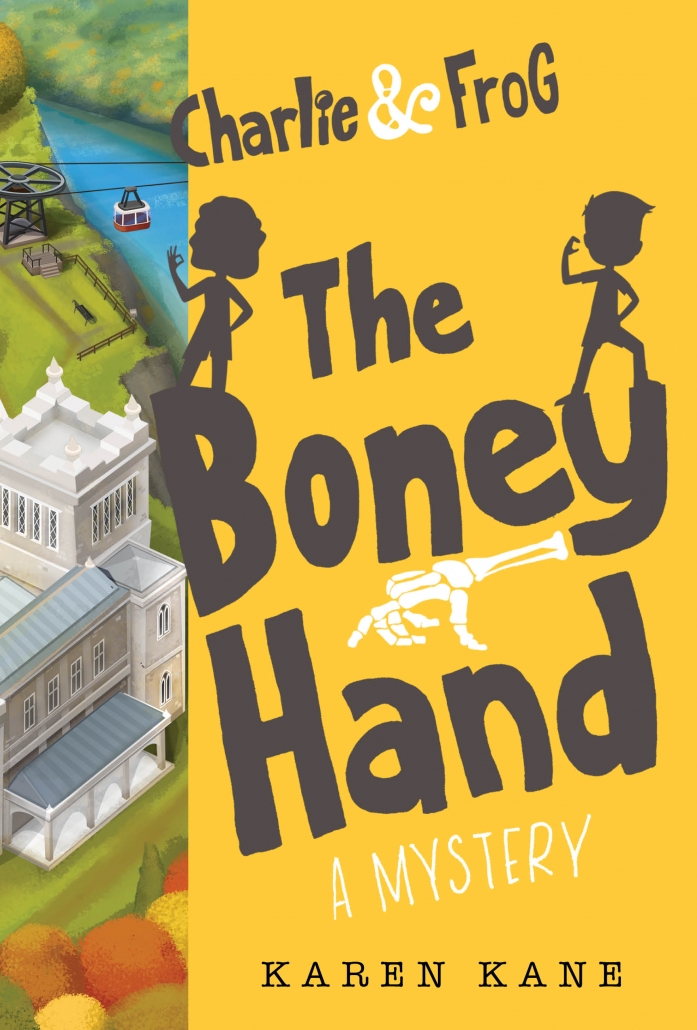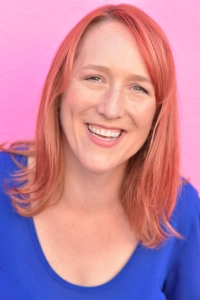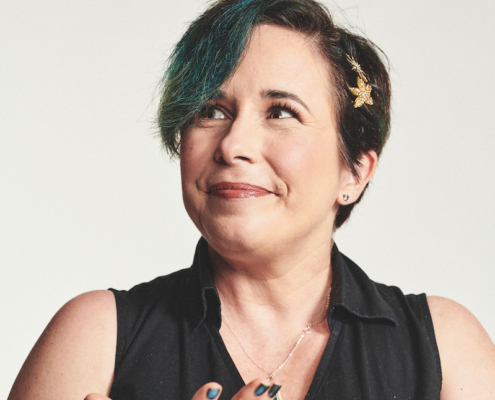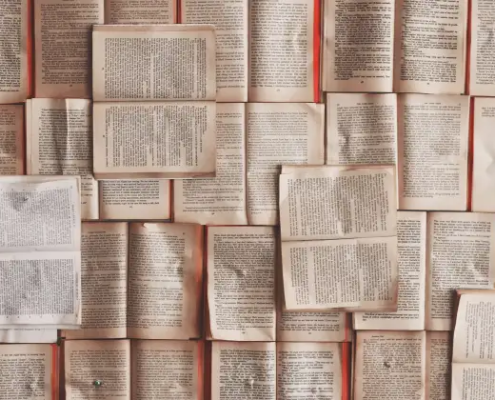New Release: The Boney Hand – Karen Kane ’16
First, congratulations on your first book, Charlie & Frog, being an Edgar Award Finalist! How was writing that first book different from writing your second book, The Boney Hand?
I started Charlie & Frog while at VCFA, and I was fortunate to work on it with Amy King, Tom Birdseye, Tim Wynne-Jones, and Amanda Jenkins (for a special workshop). I did not have these wonderful advisors with me for The Boney Hand, the sequel to Charlie & Frog. But I learned so much at VCFA and through the process of writing my first book with my editor Tracey Keevan. I felt the power of all that knowledge and learning unfurl within me as I wrote this second book.
How did Charlie & Frog come about at VCFA?
Well, I came into VCFA with a different manuscript and Amy King said I’d learn a lot more if I started something new. She said she learned how to write by writing short stories, so I started writing short stories. Then one day I began feeling my way into a new middle-grade novel. I sent the pages to Amy and she loved it. That was Charlie & Frog.
What did you learn at VCFA that you used for The Boney Hand? For example, any advisors’ words that kept sticking with you?
Tim Wynne-Jones told me that the inner magic of writing is when you step up and start problem solving yourself, rather than looking for someone else to fix things. He also reminded me that I have everything within me to be able to do that. Writing The Boney Hand showed me Tim was right. Finishing that book was one of the hardest things I’ve ever done because of the timeline—Disney Hyperion wanted me to have it out within about a year of the first book.
Now, you have two middle grade books out. What is it that draws you to middle grade?
I think it’s writing from the perspective of kids that age. I’m a glass half full kind of person. Megan Benedict gave a terrific lecture on agency in middle grade protagonists (January 2014). She talked about the four characteristics that a middle grade character must have: wonder, anger (not bitter), compassion, and optimism plus (possibility). As I listened to her I realized that’s me! I’m just not a dark person—I’m about the wonder of that age, where anything is possible.
When you’re writing, what do you think is your challenge with regards to craft? Where are you weak and how do you deal with that?
Plot had always been the thing I have struggled most with, and it’s something I have worked really hard to understand. I wrote The Boney Hand differently than I wrote Charlie & Frog. I was a pantser with Charlie & Frog until I got to Tom Birdseye who said, “Love it! Now let me tell you about something called plot!” After I sold that book, I had to rewrite the mystery completely. I did not want to do that with my next book! So, I plotted The Boney Hand first, made sure it worked, and got my editor’s buy in. I wrote some scenes while outlining, but not the whole book. I’m so glad I did it that way, as Tracey and I made sure the plot worked before I plowed ahead. I love thinking about plot now. But there was a lot of studying and reading and thinking that happened before I could say that!
Let’s talk about the kids who read your book. What do you think about when you imagine a kid reading this book for the first time? What do you hope the kid will take away from the work?
I honestly never thought about the impact of having a Deaf character and sign language in my books on kids while I was writing about Charlie and Frog. I just wanted to write a great story. Frog is Deaf because I have worked with Deaf people for 25 years and that’s what came out of me. But now hearing kids are learning sign language from these books (Deaf artist Carlisle Robinson did the interior artwork for both Charlie & Frog and The Boney Hand). And Deaf kids are seeing themselves as strong and assertive in a literary world that doesn’t question them being Deaf. Mostly though, I wanted all kids to feel the magic of a good story like I did as a child, and still do.
You did your critical thesis and lecture on feedback (Thanks for the Feedback! Not Really! January 2016). Why did you choose this and how do you take feedback now?
I chose this topic because I wanted to take charge of the feedback I was receiving rather than letting the feedback control me and my writing choices. My thesis and lecture were a personal exploration of how I process feedback, and how I could learn to trust myself. Now, with my third book, I’ve found I don’t want people in my head too early. But I will talk about my story to my husband and close friends. If they ask questions and I don’t know the answers, I know I have some plot questions to work out. With The Bony Hand, I sent it to thirteen hearing and Deaf readers near the final draft, to get their feedback, which was invaluable.
Can you give readers and teachers of writing a writing craft book that you’ve found particularly useful?
I used Story Grid by Shawn Coyne to write The Boney Hand. It just spoke to me so clearly and I got it. I like how he outlines scenes. His book really helped me focus my plot. And for my new middle-grade that I am working on, I am also using Story Genius by Lisa Cron. Craft books are tricky—you have to be ready for them. I was ready for Story Grid when I discovered it, and now I feel ready for Story Genius. There are craft books I read while at VCFA which made no sense at the time, such John Truby’s Anatomy of Story. Telling you this makes me want to find my copy and see if I feel differently about Truby 3 ½ years after graduation.
What unusual craft tip do you have for fellow writers? By unusual, I mean something you learned that popped for you or that felt different from the usual advice.
This is nothing original but so important that it always needs to be restated: Your journey is your own. Your job is to figure out what works for you and not someone else. That goes for everything in your life- your writing, your marriage, how you eat, how you exercise, how you parent, and so on. There are millions of people out there with the “right” answer for you. But only you know you. And if you listen to your deepest self, you can and will figure out your own path.
I remember we did yoga together at VCFA – I was in first semester and you were graduating. Do you still do this? What do you do to keep sane in the ups and downs of writing and publishing?
I loved doing yoga at VCFA, so afterward, I started studying yoga more seriously and I just got my yoga teaching certification. So yoga is huge in terms of managing writing stress, but mostly, I start writing and keep my head in the work. I try to have joy and appreciation every day for the things around me. The only power I have is my energy and what I’m putting out there. Yoga helps with that. I try to remember that the joy is the journey, not the destination.
Karen Kane has worked as an interpreter for the Deaf community for over 25 years. Her path to Charlie & Frog took her from a small village near Rochester, New York, to the bustle of Washington, DC. The people she met along the way inspired her writing with their strength, warmth, and humor, especially those in the Deaf community. Karen graduated from the National Technical Institute for the Deaf and received her MFA in Writing for Children and Young Adults from Vermont College of Fine Arts. When she’s not writing, you can find her in person as a sign language interpreter at Gallaudet University or lost in the stacks of her local library. The Boney Hand is the second novel in the Charlie & Frog series. Visit her online at www.karenkanebooks.com.








